
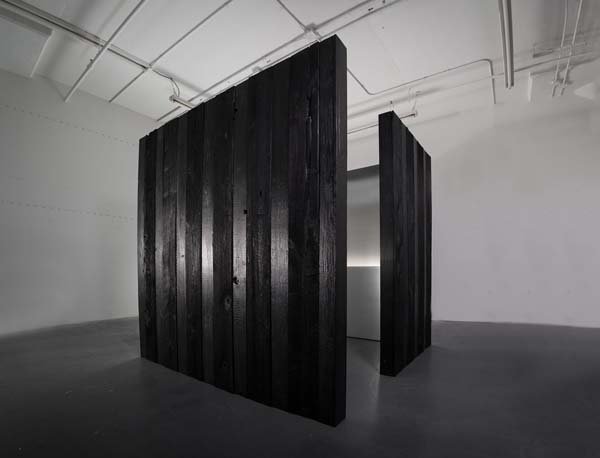
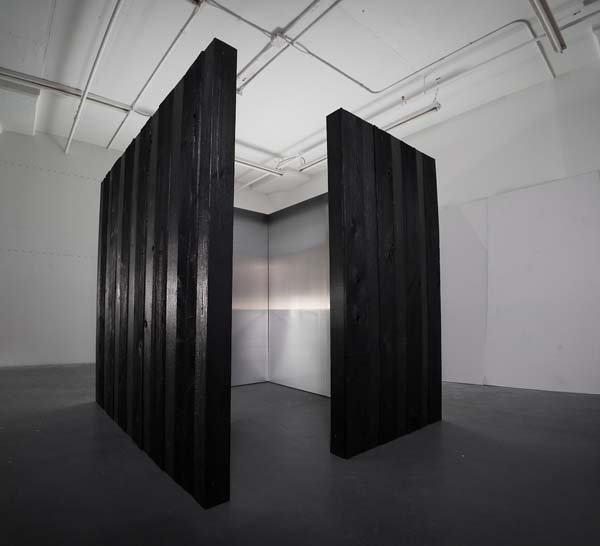
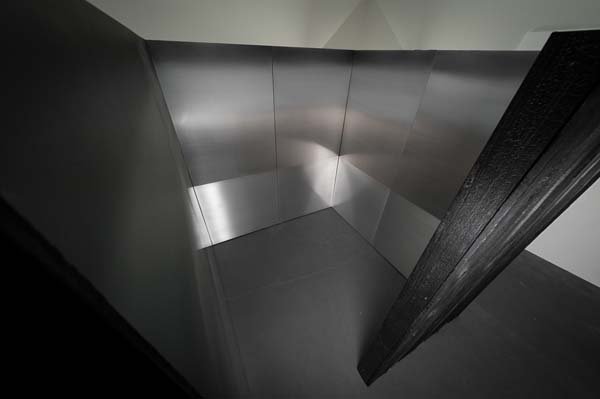


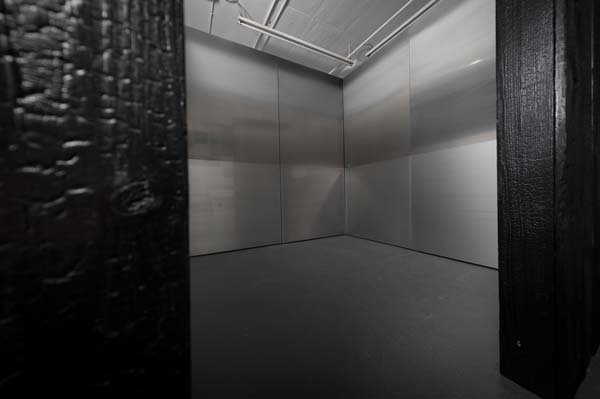
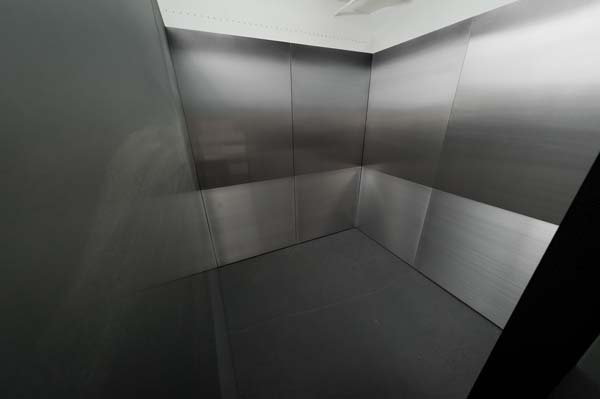
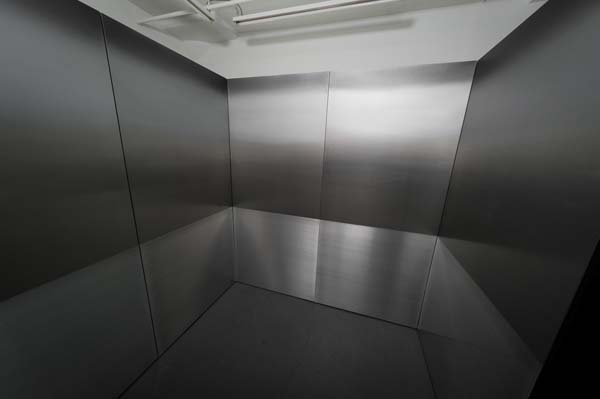
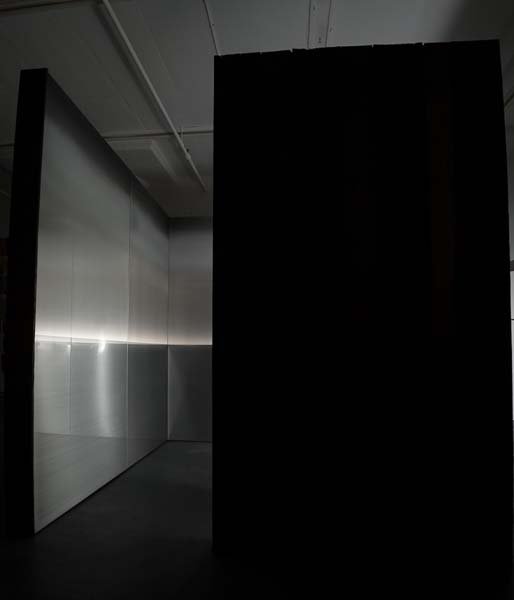
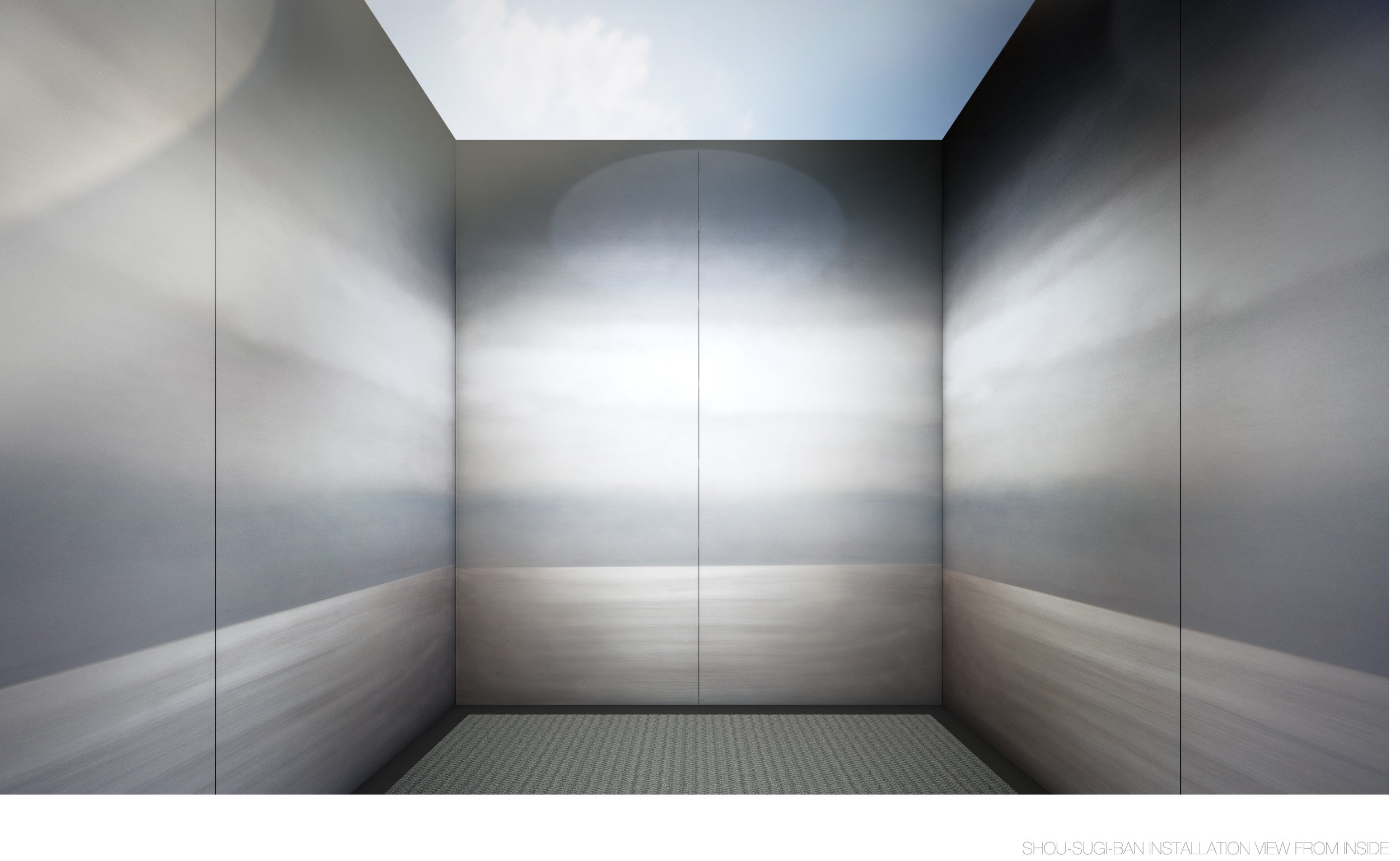
EMPTINESS THE SKY (SHOU SUGI BAN) Charred Redwood, Wood Sub Structure, Pigment, Urethane, Aluminum 84 x 84 x 84 in (213.36 x 213.36 x 213.36 cm) 2015 Location: Museum Di Palazzo Grimani, Venice, Italy | The 56th Venice Biennale
Miya Ando’s Emptiness The Sky (Shou Sugi Ban) was a contemplative, site-specific installation exhibited at the 56th Venice Biennale in 2015 as part of Frontiers Reimagined, held at the Museo di Palazzo Grimani. The work took the form of a 7-foot (2.1-meter) cube constructed with a wooden substructure clad in shou sugi ban—a traditional Japanese technique of charring cedar wood, historically used for fireproofing and weatherproofing. The dense, blackened surface of the cube’s exterior offered a striking visual and material contrast to its interior, which featured Ando’s paintings on aluminum. These subtly reflective surfaces shifted with changing light, evoking the sky’s constant atmospheric movement.
The installation was informed by the Japanese concept of kū (空), meaning both "sky" and "emptiness," reflecting Ando’s deep engagement with impermanence, elemental materials, and environmental cycles. By juxtaposing charred wood with polished metal, the work materialized a dialogue between destruction and renewal, density and luminosity, permanence and flux. At the same time, Emptiness The Sky can be understood within the lineage of Western conceptual and nature-based art—echoing traditions of land art, climate-focused sculpture, and minimalist phenomenology. It resonates with the legacy of artists such as Richard Long or Ana Mendieta, who used elemental materials to connect physical presence with ecological awareness.
In this context, Ando’s cube is not only an architectural form but also a conceptual climate container—one that meditates on transience, transformation, and human interaction with natural forces. By invoking fireproofed wood in a moment of accelerating climate instability, and reflecting the sky inside a darkened enclosure, the work becomes a quiet yet urgent gesture: a space of retreat and reflection, positioned at the intersection of traditional craftsmanship, environmental concern, and conceptual rigor within both Eastern and Western aesthetic traditions.